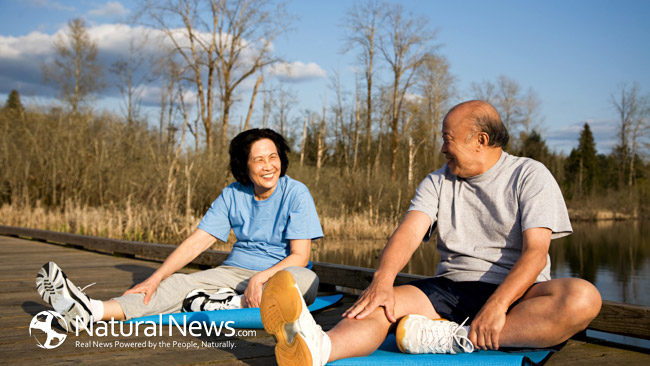According to the study, Arthritis affects over 27 million people in the United States. It has been suggested that nearly one in two adults are likely develop arthritis during their lifetime. The condition usually develops after the age of 40, but various reports confirm that it can potentially occur much earlier as well. The symptom breaks down the cartilage between the joints causing the bones to grind together painfully. Arthritis affects the hands, hips, knees and most importantly the lower back. It is more abundantly common in people who are overweight.
Exercises can help reduce the intensity of the pain, ensuring further prevention of the condition in the future. It also helps increase strength around the joints, flexibility, and mobility and assists combat pain and fatigue. Getting involved in moderate exercises everyday can lessen the pain and maintain a balanced weight. Regular physical activity can actually provide you more bone strength and energy to get through the day and get adequate sleep. The release of endorphins everyday will encourage you to be in a positive mood and improve your sense of well being overall.
What Exercises Can Help During Arthritis?
Some of the many beneficial exercises include range-of-motion exercises, strengthening exercises, aerobic exercise and other various activities.
Low-impact exercises including walking, water exercise help strengthening the muscles, repair damaged bones and improve knee flexibility.
The Leg Raise:
The Leg Raise strengthens the quadriceps which is attached to the knee joint. As you lie flat on your back on the floor, raise your arms at the side and the toes upward. Now slowly tighten the leg muscles and lift your legs several inches from the ground. Make sure to keep the legs straight. Push your lower back down while tightening the stomach muscles. Hold unto the position for five seconds. You may start with one set of four for each leg.
The Hamstring Stretch:
Lie on the floor with both legs bent. The next move is to lift one leg, still bent and bring the knee back toward the chest. Now link your hands behind the thigh. Straighten your leg, and pull it back toward the head. Once you feel the stretch, hold for 30 – 60 seconds. This should be followed by bending the knee lowly and lowering the leg back to the floor.
The Half-Squat:
Stand with your feet shoulder-distance apart. Now stretch the arms out and bend your knees slowly until your body is in a half-sitting position. We suggest you hold onto a chair for balance while performing the Half-Squat. Follow the exercise by keeping your back straight and chest lifted and your feet flat on the floor. Hold the position for five seconds. Do a set of 10 repetitions. The exercise strengthens the muscles in the front and back of your thighs.
The One-Leg Dip:
Get hold of two chairs and stand between them. Lift one leg about 12 inches and hold it in front of you. Use the chairs for balance, if necessary. Bend the other leg slowly while keeping the back straight and lower your body a few inches in a sitting position. Make sure the lifted leg is not crossed in front of the bent leg. Stay in that position for five seconds and straighten back up. Repeat the same and switch legs this time. The One-Leg Dip exercise strengthens the muscles in the front and back of your thighs.
The above exercises are easy, effective, and convenient and can be performed anytime and anywhere. Start them slowly and gradually increase the number of repetitions as your muscles get stronger.
If you or loved one is in dire need of specialists for the treatment of Arthritis, we suggest you visit Board Certified orthopedic doctors today for all the treatment, counseling, and education, all under one roof!
About Author
I’m Tany Clarck, primarily a writer, has been associated with orthopedic doctors in phoenix AZ for the past four years. I’ve been researching about the Pain management Factors and Orthopedic disabilities and have tried to guide many followers on how live a life without stress and minus pain.
Reference:
http://www.mayoclinic.org/diseases-conditions/arthritis/in-depth/arthritis/art-20047971
http://www.health.com/health/gallery/0,,20706071,00.html
http://www.healthline.com/health/osteoarthritis/easy-excercises-knee#Overview1





